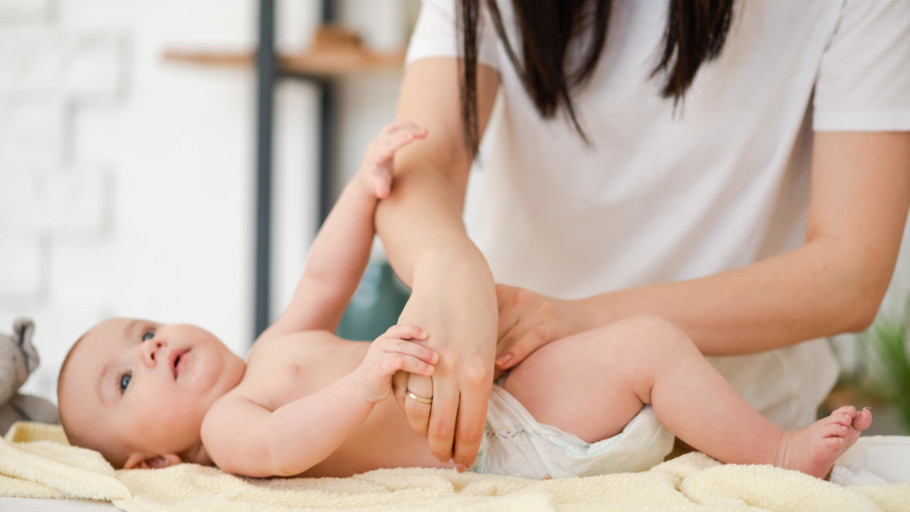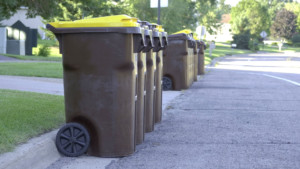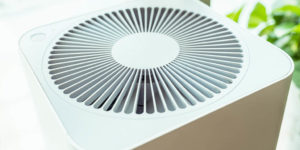Diaper Pails: Our Top 5 Best Choices for Sanitary Diaper Disposal
Tired of smell of a stinky diaper greeting you when you step inside your front door? Investing in a proper diaper pail can help keep your nursery from reeking during those first few years with your baby. Diaper pails are specially designed to seal in odors and help you dispose of diapers in a safe and sanitary fashion. Many pails also come with liners that help you maximize space within the bags to quickly dispose of diapers.
We’ve put together our top five best choices for sanitary diaper disposal – and talked about proprietary liners, how construction affects smell, and much more – in our Buyer’s Guide below.
- Triple odor control
- Closed-cell ABS Plastic
- Includes full-sized refill
- Converts into trash can
- Ergonomic foot pedal
- Double airtight clamps hold odors in
- High capacity refill bags
- Foot pedal included
- Carbon filter included
- Double sealed inner and outer lids
- Includes 6 months supply of bags
- Lid and child safety lock
- Food pedal included
- Easy access disposal door
- Adaptable pail doesn’t use special bags
- Steel pail locks in odor
- Childproof lock
- Sliding door design
- Tight twisting sealing system
- Baking soda cartridge
- Step pedal
- Childproof locking system

With a high overall capacity, great design, and unique construction, it’s no wonder the first diaper pail on our list leads the pack and is often the most recommended. The Dekor Plus 2-12026-1 uses a two-sealed system: one on the lid itself, which opens when the step pedal is used, and another in the spring-loaded trap door, which seals in odors immediately once a diaper has been placed inside the pail. With a little practice, disposing of diapers in the Dekor Plus can be incredibly fast. Just use a little force behind your throw, and the diaper will disappear under the trapdoor.
Likewise, we really appreciate the indoor liner cutting system, which can make disposing of portions of the proprietary liner quick and simple. The closed-cell plastic is also better at dealing with smells than many other plastic pails. While we still wish this product was easier to use with non-proprietary options, we still think Dekor Plus knocked it out of the park with this one.
Pros
- Great design
- High capacity liners
- Built-in liner cutter
- Childproof lock
- Trap door design
- Large size
Cons
- Not standard bag friendly

If you’re looking for a cheaper alternative to the Dekor Plus, the Playtex Diaper Genie offers similar features for a lower overall price. Instead of using a trapdoor to dispose of diapers, Playtex uses a system that holds the diaper at the top of the pail when opened but drops the diaper when the lid closes. This system also seals off the bottom of the pail when the lid is opened, so far fewer smells escape.
The Diaper Genie also comes with a carbon filter that’s designed to absorb smells and act as a failsafe for the two seals. While we did wish this pail came in a steel design, we liked the handy and simple bag cutter that tilts forward to cut the bags with little hassle to make this one of the easiest pails on our list to empty. There’s a lot to like for the price here.
Pros
- Affordable
- Filter included
- Efficient sealing system
- Great emptying design
- Full-sized refill included
Cons
- Not standard bag friendly
- Plastic can smell over time
If style is a concern for you or you’re interested in a pail for adult diapers, this unassuming and clean diaper pail is great for blending into the background. The Vliba Diaper Pail VLDU00002 can easily appear like a small air purifier or fan than a diaper pail. The lid seamlessly connects to the rest of the bin, and, when opened, a similar trap door to the Dekor Plus option can be seen.
The Vliba Diaper pail is also much smaller than some of the other options on our list and runs a bit more in cost. Many color options and a focus on design means, however, that Vliba is aimed more at a discreet pail than a large one. This Vliba model also relies only on proprietary liners, but the company does offer a six month supply free with purchase. The Vliba isn’t for everyone, but many appreciate this pail for a modern home and a need for discretion.
Pros
- Discreet design
- Great double seal
- 6-month supply included
- Lots of color options
- Trap door design
Cons
- Not standard bag friendly
- Low capacity
- Expensive
Coming in as the only bag on our list to offer standard liner compatibility, this Ubbi pail sets itself apart as the only option on our list that doesn’t feature a step pedal. Instead, the Ubbi relies on a simple door mechanism that can be easily opened and closed. While you’ll have to physically touch the pail each time you need to use it (which can pose a health hazard), the bin is one of the best to keep in smells on our list.
The Ubbi pail is also the only pail on our list to feature a steel design. This steel, alongside the sliding door, is highly effective for odors. The steel design means, though, that this pail costs more than the others on our list, and many parents won’t be happy about the health issues that could stem from the sliding door design. Regardless, if you want to keep on top of sanitation, want to avoid unique bags, and need something that’s going to trap odors no matter what, it is hard to go wrong with this model.
Pros
- Sliding door design
- Steel body
- Standard bag compatible
- No recurring costs
Cons
- Expensive
- No foot pedal
- No unique liner options
The final pail on our list has a unique system that twists the liner shut each time the lid is opened to create a fairly airtight seal. The Munchkin Step Diaper Pail 15901 uses an Arm & Hammer puck cartridge to aid in smell management and is compatible both with continuous liners as well as snap and seal liners that are both specially designed to work with the Munchkin pail.
While this pail may not offer the highest capacity, it does work to offset the plastic design with some of the best odor control out of the options on our list. Likewise, Munchkin has the benefit is being widely popular, so proprietary bags aren’t too hard to find. A handy child safety lock rounds out the features offered on this pail, which remains an effective choice for parents.
Pros
- Twisting seal design
- Dual-compatible
- Included Arm & Hammer cartridge
- Good child safety lock
- Good foot pedal
Cons
- Low capacity
- Somewhat expensive
Comparison Chart
| Dekor Plus 2-12026-1 | Playtex Diaper Genie | Vliba Diaper Pail VLDU00002 | Ubbi 10006 | Munchkin Step Diaper Pail 15901 | |
| Construction | ABS Plastic | Plastic | Plastic | Steel | Plastic |
| Liner | Proprietary | Proprietary | Proprietary | Standard | Proprietary |
| # of Diapers per Liner | 580 | 270 | 45 | N/A | 272 |
| Child Safety Lock | ✓ | X | ✓ | ✓ | ✓ |
| Foot Pedal | ✓ | ✓ | ✓ | X | ✓ |
| Capacity | 60 diapers | 38 diapers | 45 diapers | 55 diapers | ~ 20 diapers |
| Dimensions | 24 X 15 X 11 | 9.4 X 12.1 X 27 | 13.1 X 9.7 X 20.4 | 15 X 10.8 X 22.5 | 12.2 X 27.6 X 13 |
Buyer’s Guide:
Diaper Pails
Still not sold on one of our many options? We’ve got you covered. From construction to capacity and so much more, here’s what you need to know before you buy a diaper pail.
Final Thoughts
When it comes to diaper pails, we think that easy disposal and easy liner replacement is highly important alongside capacity and sanitary operation. The Dekor Plus offers the best overall operation, with a highly effective trap door design, sturdy build, and ABS Plastic construction. Should you be open to a pail that only works with proprietary liners, we strongly recommend this product.
For those who want a more affordable choice, the Playtex Diaper Genie is a fair comparison to the Dekor Plus for a great deal less money. This pail also offers a great method for liner disposal. Finally, if you want to avoid proprietary liners entirely, we recommend the Ubbi pail. While the sliding door design is somewhat controversial, the steel construction should more than makeup for it. Regardless of which you pick, we think there are many reasons any one of these five pails could work best in your home to make the nasty-smelling nursery a thing of the past.









